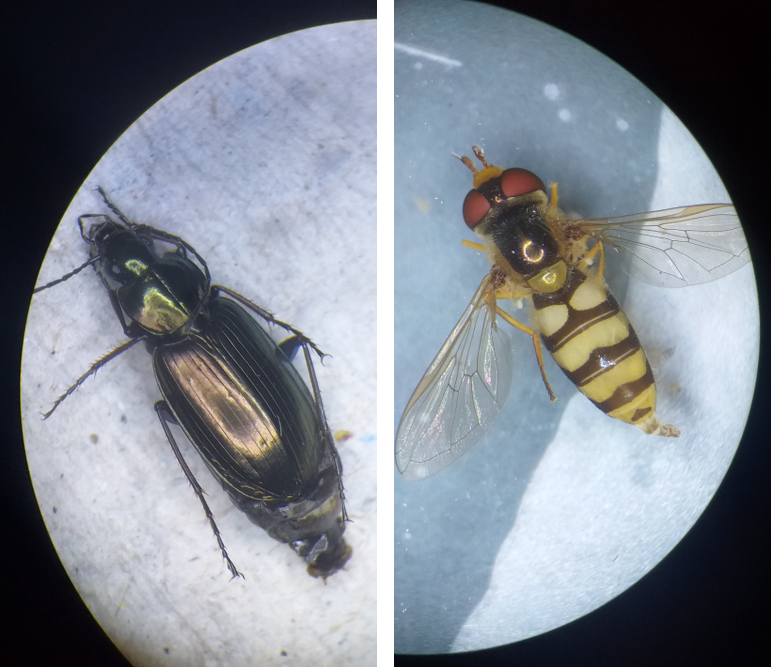Frederik Gerits discusses their recently published article. Published in Journal of Applied Ecology, the article shows how variation in local land use types influence both biotic (e.g. presence and abundance of predatory arthropods and pollinators) and abiotic parameters (e.g. microclimate variation) in a peri-urban landscape.
Our hypothesis is that these influences of landscape composition might further play a role in the resilience of landscapes in general and crop performance in an agricultural context more specifically. However, if and to what extent this is the case, remains to be further explored.
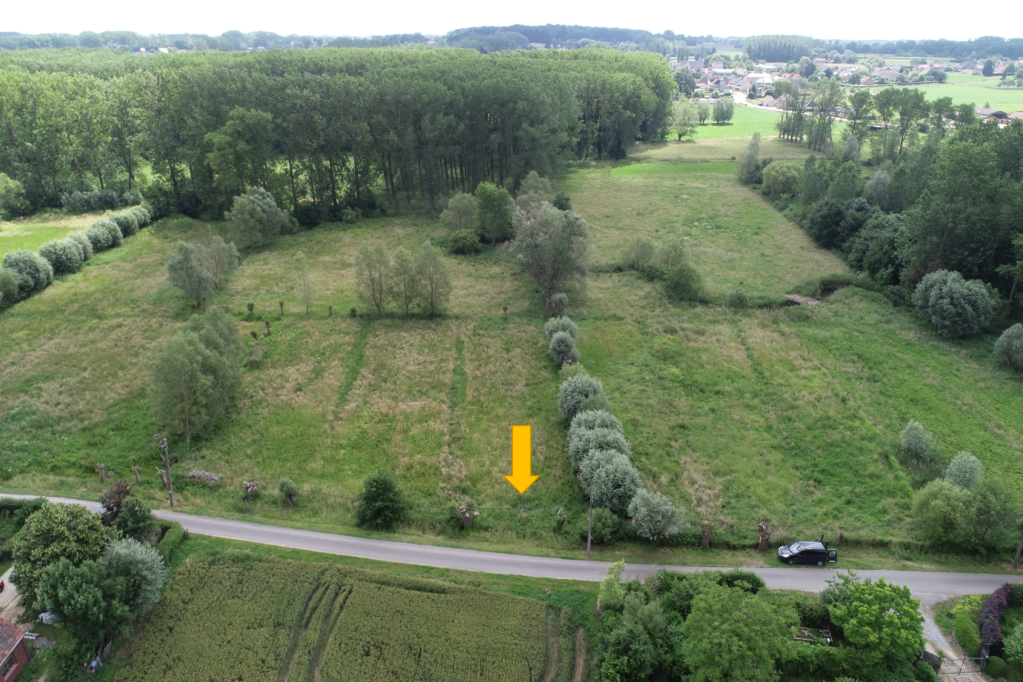
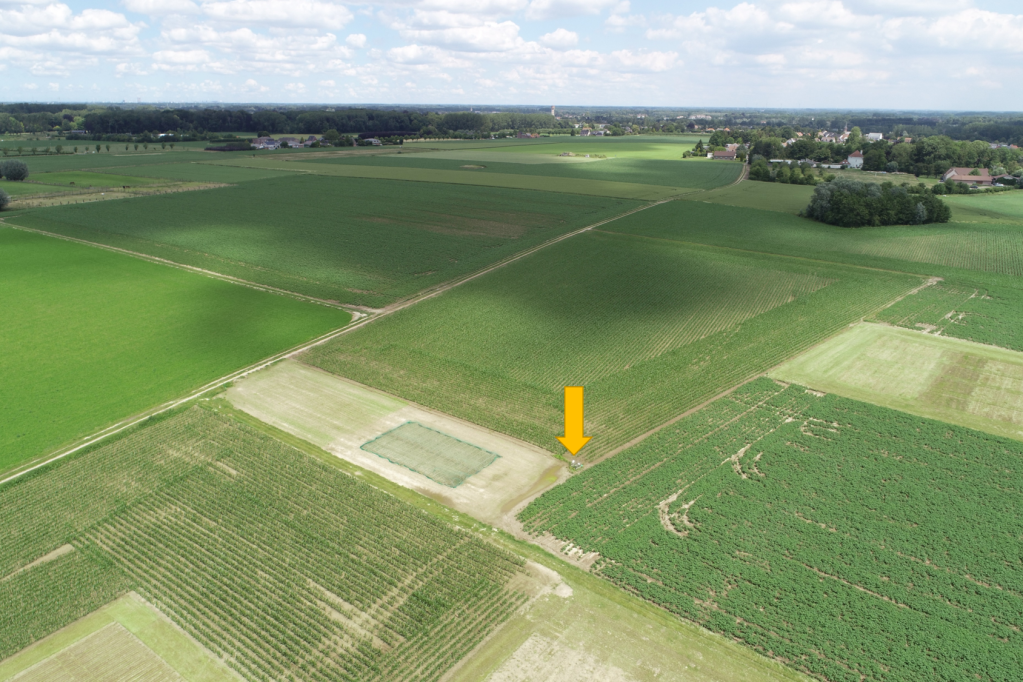
Overview
To simultaneously assess the influences of the occurring land use types on microclimate variation, the activity of functional arthropods and crop performance, the authors developed an innovative phytometer. More specifically, standardised 1m²-gardens with a fixed combination of ten different crops, microclimate sensors and traps for arthropods act as a measuring tool to probe the landscape.
In this study, we distributed 41 m²-gardens in different landscape contexts in a peri-urban landscape in Flanders (Belgium). We differentiated between multiple land use types, which are all known to be important for ecosystem functioning: arable land, productive grassland, hedgerows or forest fragments, road verges or flower rich habitats, residential gardens and built-up areas.
We repeated our measurements in 2018 and 2019 and visited the 41 m²-gardens biweekly in close collaboration with local rural actors.
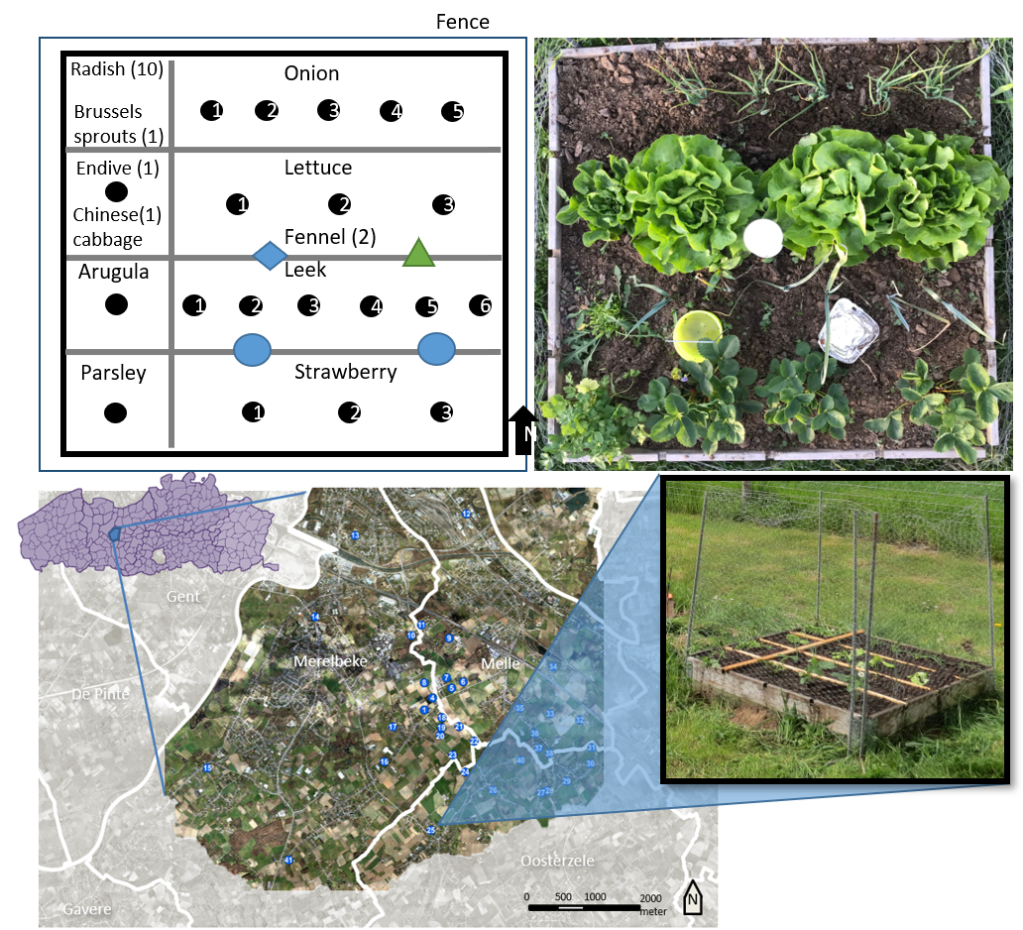
Landscape composition and arthropods
We found that both predators and pollinators were more active in areas with a higher share of arable land in the environment. On the opposite, residential gardens and built-up areas in the surroundings were negatively related to both arthropod groups. For predators such as carabid beetles, this finding is supported by other research and partly attributed to high prey availability. While for pollinators this trend is opposite to our hypotheses and other research.
By using fluorescent yellow pan traps, it could be that in arable conditions the traps stood out in an unattractive matrix of arable crops (e.g. maize) and attract pollinators towards it. While in flower-rich habitats, pollinators could be distracted from the traps.
Also, the overall intensity of the agricultural land use in the study landscape is relatively low, with our most intensive location surrounded by 83% agricultural land use and still has 17% of residential areas or semi-natural habitats in the 500-meter radius. It is conceivable that generalist pollinator species source from non-crop habitats and forage in the arable regions.
We have, however, no data yet to support these hypotheses. A full taxonomic study with more trapping systems (e.g. netting for pollinators) could further explore whether we mainly caught generalist or specialist species in our pan- and pitfall traps.
Finally, the local presence of biologically valuable herbaceous vegetation, like extensively managed grasslands or road verges, promotes predators, but not pollinators. This might have something to do with the mobility of those species.
Landscape composition and microclimate
The variation in temperature and soil moisture was lower in areas with a higher share of hedges, trees and forest fragments in the environment. This is what microclimate researchers call a ‘buffered microclimate’.
In areas with more arable land use in the environment the variation in soil moisture was higher, and to a lesser extent also the variation in temperature. This is in line with what is expected in open arable conditions where wind has free rein and radiation can warm up the soil underneath the crops. High green vegetation in the environment tends to decrease wind speed, create shadow and increase air humidity.
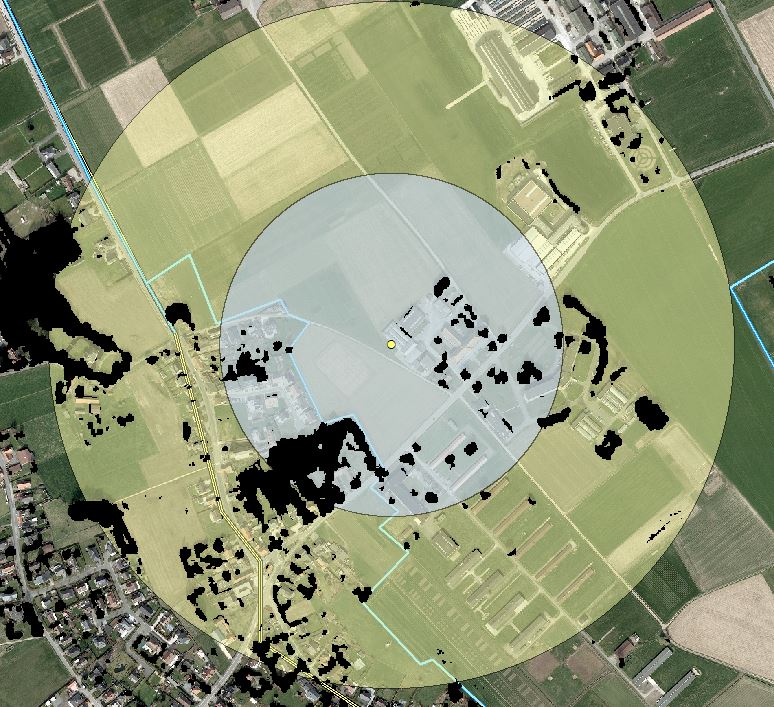
We now understand that the composition of woody vegetation matters. However, we do not know yet how much is needed and at what scale. For instance, should we strive for a 10 % woody vegetation in a 500-meter radius? Such insights could open new opportunities at the landscape scale for coalitions between woody vegetation and crops where light and water are optimally distributed with minimised competition.
Furthermore, the data show that at the local scale (up to 50 meters) the share of valuable low green vegetation, such as extensive grassland, is also increasing soil moisture buffering. Next to beneficial effects on predatory arthropods yet another argument to create local, permanent herbaceous vegetation next to crops.
Landscape composition and crop performance
Considering the buffered microclimate by woody vegetation and higher/lower activity density in arable/urban conditions, we could expect to see ecosystem services such as natural pest control, pollination and plant yield delivered in the 1m²-gardens. In short: we didn’t.
We did not see that the crops in the 1m²-gardens grew better in locations where the soil moisture and temperature were buffered. Due to the exceptionally dry and warm summers in 2018 and 2019 we had to frequently water all m²-gardens with equal amounts. Doing so we probably equalised the drying effect of the landscape on the m²-gardens, evening out landscape scale effects on plant growth.
Neither did we find decreased leaf herbivory in 1m²-gardens where a higher activity of natural enemies. It could be that the natural enemies that we observed in our pitfall traps did not feed on the insect species that caused leaf damage on the studied crops.
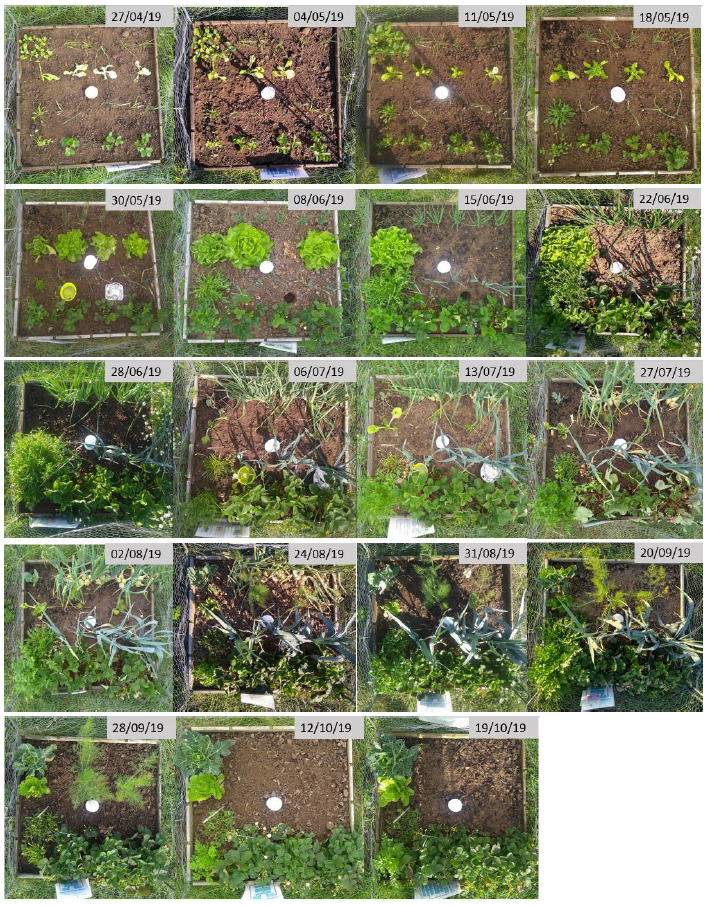
Yet, when we combined data of 2018 and 2019 in one model there was a marginally positive effect of semi-natural habitat in a 500-meter radius on multi-crop performance in the m²-gardens. As explained above, neither of the studied abiotic or biotic mechanisms helped explaining this pattern. This leaves questions unanswered and opens possibilities to explore in further research.
Read the full article, “Disentangling the interrelated abiotic and biotic pathways linking landscape composition and crop production” in Journal of Applied Ecology
